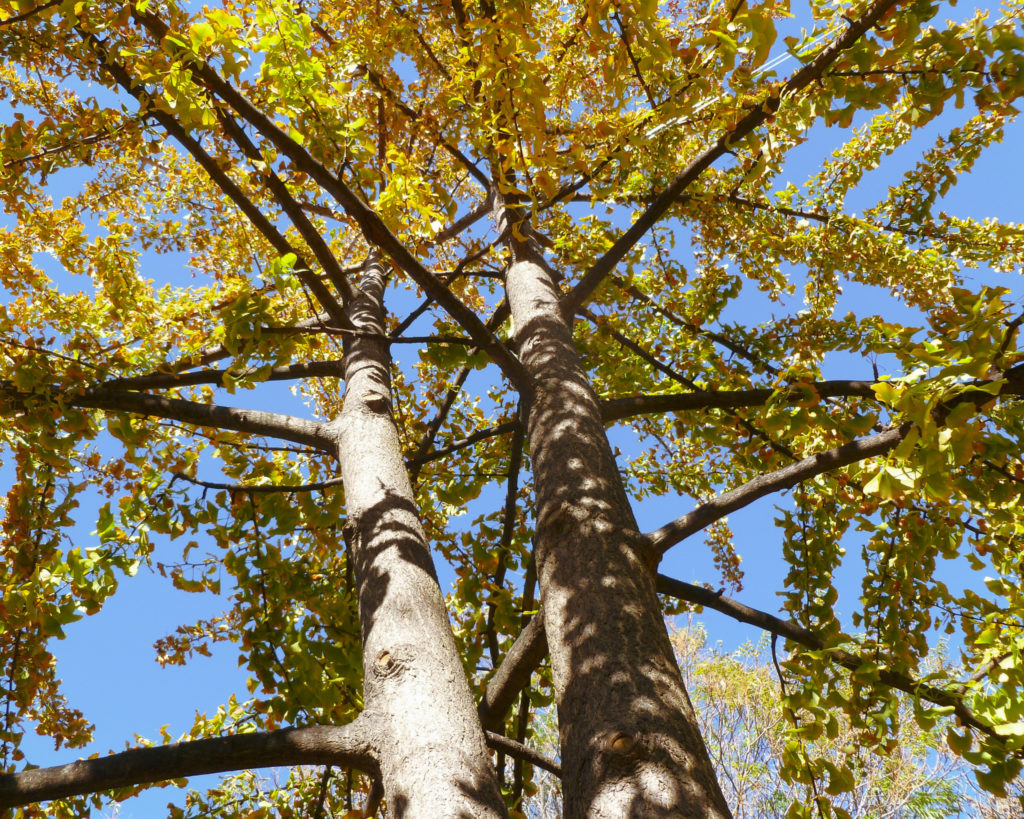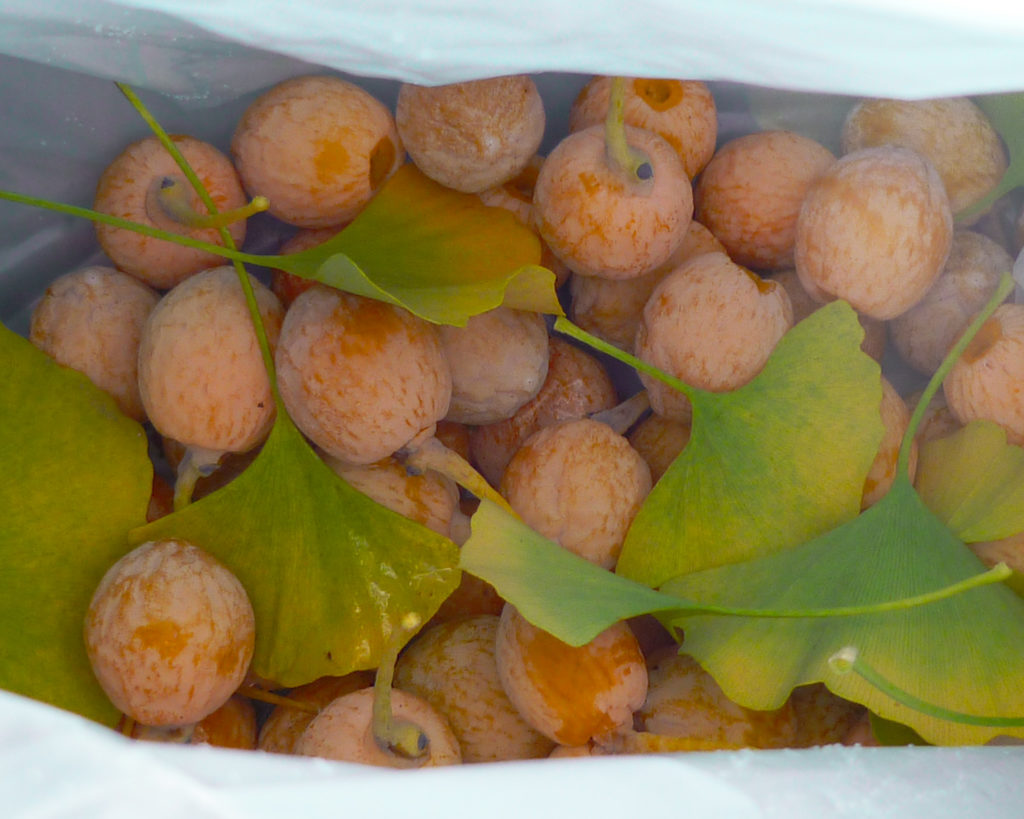Ripening Guide
Learn more about the many fruits of Toronto's Urban Orchard
Ginkgo
Not Far From The Tree no longer includes ginkgo in its picking program and is not accepting requests for harvests. Please enjoy this knowledge to harvest it safely and responsibly.
Don’t be turned off by the not-so-nice scent of this superfood! Ginkgo nuts have been enjoyed for centuries and boast a long list of health benefits. They have been said to support the prevention of chronic diseases, promote wellness, strengthen the immune system and even improve brain function! Harvesting these seeds may be labour intensive, but the flavour and texture, similar to edamame, are surely worth it.
The most revealing characteristic of gingko trees are their unique, green, fan-shaped leaves. The ginkgo seeds resemble fruit, as the seed coating is about the size of a ping-pong ball and fleshy. They have a shape similar to a plum and grow in a pale green colour before they mature into a yellow or orange colour.
- September
- October


How to tell when ginkgo are ready to harvest: The seed coating will change colour from a pale green to a more yellow/orange colour and begins to give off a strong and foul odour. When ginkgo seeds are ripe they will begin falling off the tree, and the ones that remain on the tree should be easy to gently tug off. Since the edible portion of the gingko seed is contained within two layers of seed coating, it is OK to eat the windfall (seeds that have fallen onto the ground) as long as they haven’t been partially eaten by animals.
Picking tips: Great care must be taken when dealing with ginkgo seeds because they have certain toxic properties. Touching the seeds with bare skin may cause a rash as the coating contains urushiol, the same chemical that causes allergic reactions in poison ivy, poison oak and sumac. The best way to minimize skin contact with the seeds is to always wear gloves when harvesting off the tree or ground. Otherwise, ginkgo are picked much like any fruit; gently pull them from the branch using your gloved hand or a picking pole. It may not be a good idea to climb a ginkgo tree because of the increased risk of contact between your skin and the fruit.
Storage tips: As soon as the seeds come off the tree, it is a good idea to remove the fleshy, odorous, toxic outer coating. Soaking the seeds in water will help the coating come off the seed easily (remember to wear gloves!). Wash and dry the seeds, and discard the coating. As soon as the coating is gone, the seeds will no longer smell or cause irritation to the skin. Dried seeds can be stored in the freezer for long periods of time.
Preparation tips: It is important to note that gingko nuts cannot be eaten raw as they are mildly toxic. Boil, bake, roast or fry them before consumption. Peel or crack the shell off the nuts and eat the bright green kernels inside. Depending on cooking method, the seeds will be similar to edamame in taste and texture. The recommended limit for ginkgo nuts is around 8-10 per day for an adult; excessive consumption can lead to food poisoning.
-
Have a Ginkgo Tree? Register it Here.
-
Want to Pick Ginkgo? Join our Team.